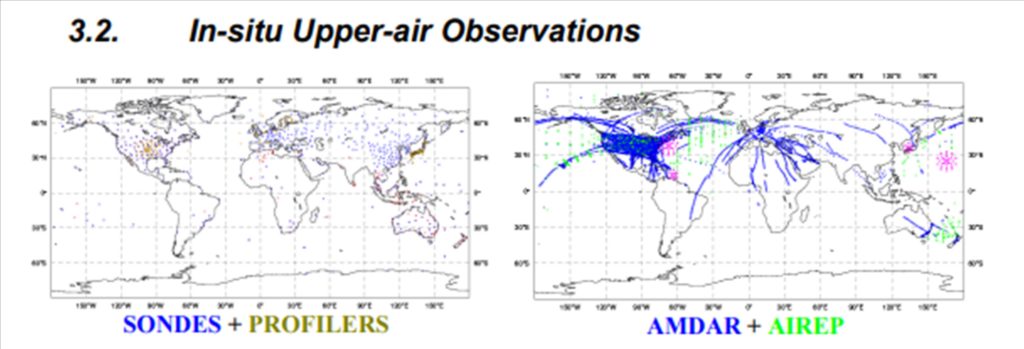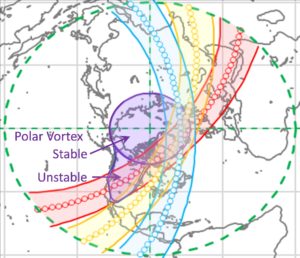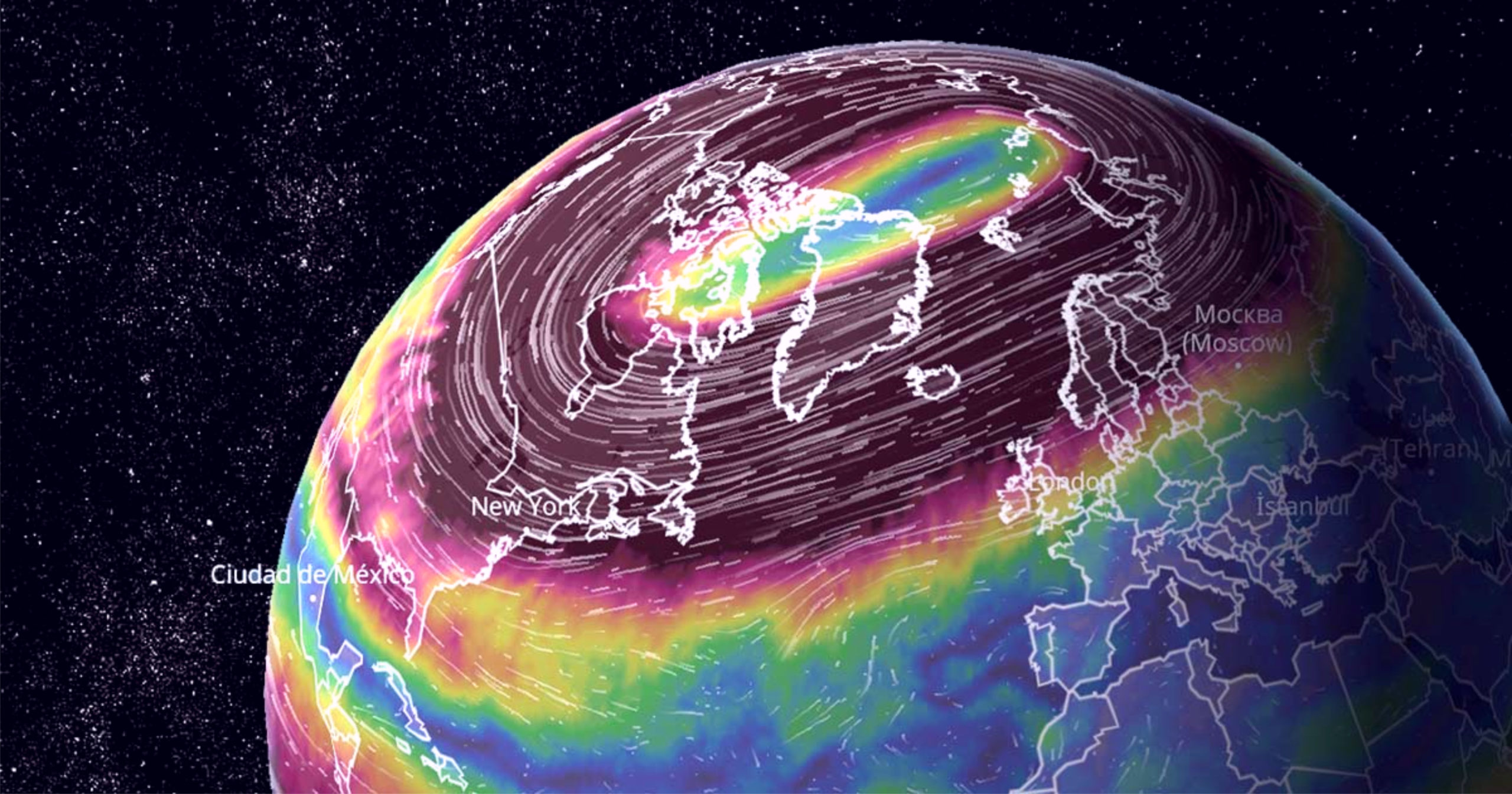Numerical Weather Prediction (NWP) requires high quality wind and profile data as input to initialize the computer models. The World Meteorological Organization (WMO), for example, maintains a Rolling (continually updated) Requirements Review process that provides a comprehensive database for Observation Requirements, Space-Based Capabilities, Surface-Based Capabilities, and Analyses. A recent summary of requirements for wind measurements by Stoffelen et. al. (Stoffelen 2020) compares current capabilities against requirements:
“The required vertical resolution for weather and climate applications is about 1 km in the troposphere and 2 km in the stratosphere, where the typical horizontal wind vector accuracy requirement is 2 m s-1 at a required 1–6-hourly coverage. These requirements are not met today over the oceans, tropics, and most of the Southern Hemisphere.”
Current Limitations
Radiosondes, which best meet the measurement requirements, have very limited spatial coverage (Figure 1) Note that the ocean areas, the Southern hemisphere, and the northern latitudes – where the Polar Vortex plays a critical role – are not well covered. Each balloon flight takes about 2 hours, and each location typically makes two measurements per day. Space-based Lidar provides lesser but very useful vertical profile data, but they require larger, more expensive satellites (for greater power requirements) and they sample profile data only in a narrow slice below the orbital track. Revisit times are consequently long. Several satellite systems measure horizontal winds by following cloud motion, but spatial resolution is inversely proportional to areal coverage and cloud (wind) altitude typically inferred indirectly from radiometric signal and is consequently not accurate.

The HHS Solution
The Hurricane Hunter Satellite (HHS) program will make significant additions to the to 6D (location and velocity) wind measurements requirements for a large swath (2,000 km cross-track) anywhere that clouds have features (edges or shadows). At any given time, two-thirds of the earth has cloud cover. Coverage on three successive orbits for a 71 degree inclination is presented in Figure 2. The HHS measurement approach employs a pair of low-cost microsatellites flying in tandem and making stereo measurements over the entire swath presented in Figure 2. Expected accuracy is 1 meter/second or better in all three dimensions with altitude uncertainties of about 100 meters.

References
Stoffelen (2020): “Wind Profile Satellite Observation Requirements and Capabilities”, Ad Steffelen et al., Bulletin of the American Meteorological Society, Vol. 101, Issue 11, December 2020 [Paper]
ECWMF (2004): European Centre for Medium-Range Weather Forecasts



